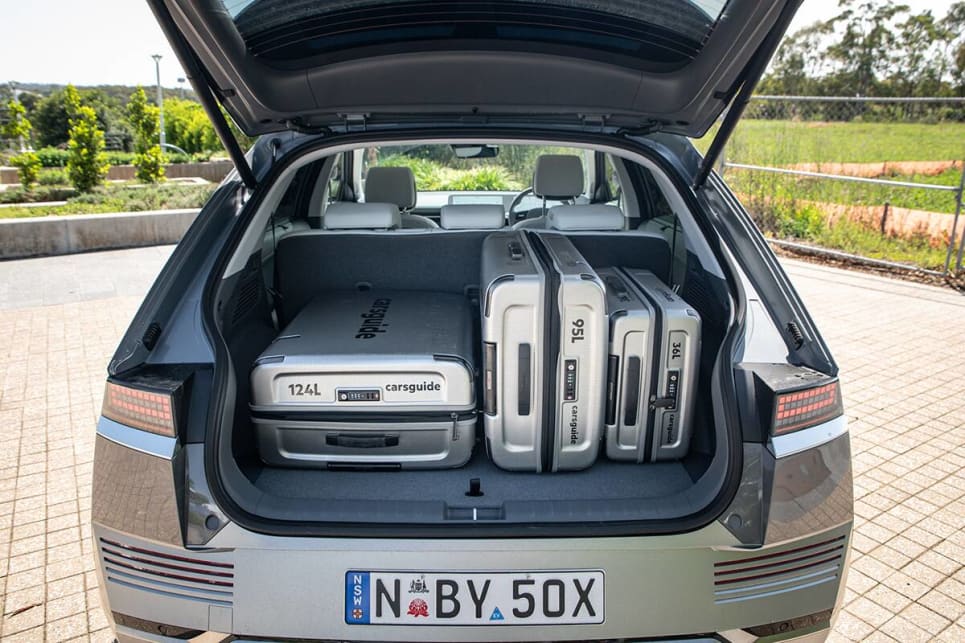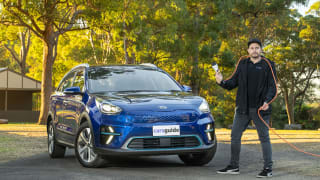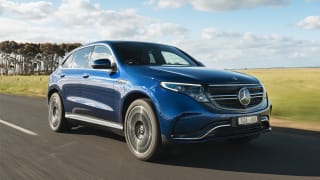We have to talk about design first because the Ioniq 5 is something that needs to be seen to be believed. From a distance it has the proportions of a hatchback, but once you step a little closer, or see it dwarfing hatchbacks and SUVs, the scale of it is confronting.
It’s massive, measuring in with a longer wheelbase and equal width to Hyundai’s own Palisade and Santa Fe respectively, with all of its elements like wheels and windows scaled up to accommodate.
The out-of-this world design language is deliberate. It’s designed to catch eyes and prove the electric era opens up rule-braking opportunities when it comes to a car’s shape.
Interestingly though, the Ioniq 5 looks to Hyundai’s origins for its inspiration, the clear retro influence coming directly from the 1974 concept on which South Korea’s first true domestic model, the Hyundai Pony, was based.
This is reflected in the '70s and '80s graphics from the raked 45-degree boot window and spoiler to the pixel-look LED light fittings and parallel line motifs used throughout the exterior and interior of this car.

The attention to detail is admirable, and the car's profile takes on another character at night, with a ‘grille’ made up of more subtle LED lights appearing across the front.
Hyundai has even gone to lengths to make items like the charge bay and door handles flush to the body and not interrupt the design.
While the Ioniq 5's exterior looks to the past for its inspiration, the interior looks to the future. It presents with a clean, open design allowed by the lack of a transmission tunnel.
There’s unparalleled adjustability through two rows of seats and even a centre console which can be moved quite a distance fore and aft.
We’ll look at that more in the practicality section of this review, but the Ioniq’s interior offers a modern look thanks to its two large 12.3-inch screens (which make up the multimedia and digital dash suites), its large window space, and its innovative use of more sustainable materials.

As a result of that last factor, the interior has a unique odour, like an organic shop, or as one colleague put it, a sushi train.
This is because there is extensive use of organic and recycled materials, including yarn made from sugar cane and corn, plastics, leathers, and paints treated using an array of organic and eco-friendly oils, and weaves made from recycled PET bottles.
Purely on the design front, the interior is full of soft-touch materials, but also has an abundance of interesting textures and patterns, with neat details like the pixel motif sneaking into the door cards.
The Ioniq 5’s eye-catching design simply won’t be for everyone. It’s fun and endearing, but also confronting and unusual.
For those looking for something more familiar to other contemporary vehicles, there will be Kia’s take on the same underpinnings, the EV6, due some time next year.
From what we understand, though, supply of this car will be more limited, and it will cost even more, which brings us nicely to how much you can expect to pay for the Ioniq 5.





















